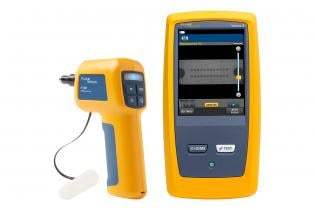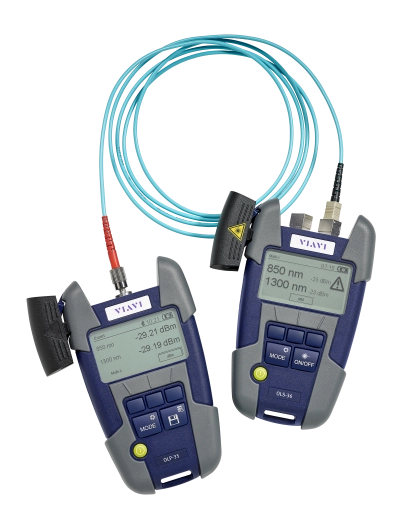The Relevance of an Optical Fibre Diameter Analyser in Keeping Sector Specifications
The importance of an Optical Fibre Diameter Analyser can not be overstated in the context of industry criteria. This modern technology assures accurate dimensions, which are necessary for optimal signal transmission and lowered depletion. By spotting variances early, producers can copyright strict top quality control steps. The ramifications of these measurements expand beyond compliance. Revealing the more comprehensive effect on system performance exposes complexities that merit more expedition.
Understanding Optical Fibre Diameter Analysis
Optical fibre diameter evaluation plays a necessary function in guaranteeing the efficiency and dependability of fibre optic systems. Accurate dimension of fibre diameter is crucial, as it directly influences signal transmission effectiveness and overall system integrity. Variants in diameter can lead to enhanced depletion, lowered transmission capacity, and higher vulnerability to ecological factors.
By employing specific measurement methods, manufacturers can keep rigorous quality control, making sure that fibres meet sector standards. This evaluation additionally assists in the identification of flaws or variances during manufacturing, permitting prompt corrective actions.
Recognizing the diameter specifications help in the choice of proper adapters and fittings, therefore improving compatibility within the network. On the whole, detailed optical fibre diameter evaluation is a fundamental facet of fibre optic innovation, underpinning advancements in telecoms, data transmission, and different applications across various markets.
Trick Functions of Optical Fibre Diameter Analysers
Optical fibre diameter analysers are geared up with numerous essential attributes that improve their capability. Significant among these are precision dimension abilities, which assure precise analyses, and real-time monitoring features that provide instant responses during the evaluation process. Furthermore, a straightforward interface style promotes easy procedure, making these gadgets easily accessible to a wider variety of customers.
Accuracy Measurement Capabilities
When it comes to ensuring top notch fibre production, accuracy measurement capacities are paramount in diameter analysers. These devices use sophisticated modern technologies to supply accurate dimensions of fibre diameter, allowing producers to maintain strict tolerances. High-resolution optics and sophisticated formulas enable the detection of min variations in diameter, crucial for producing dependable and consistent optical fibers. In addition, the capability to determine across a variety of sizes boosts versatility, accommodating different manufacturing demands. The integration of calibration standards guarantees that measurements remain exact in time, minimizing the threat of defects. By using these precision measurement capacities, producers can maintain market standards, enhance item top quality, and inevitably drive consumer fulfillment in the affordable fibre optics market.
Real-Time Monitoring Attributes
Real-time monitoring features are essential for enhancing the effectiveness and efficiency of fibre production processes. These capacities make it possible for continuous assessment of optical fibre diameter throughout manufacturing, ensuring that any deviations from defined criteria are quickly spotted. By giving instant responses, manufacturers can quickly readjust specifications, decreasing waste and maintaining high quality control. In addition, real-time surveillance facilitates the recognition of patterns and patterns in production data, providing important understandings for process optimization. The assimilation of these functions into optical fibre diameter analysers sustains proactive decision-making, equipping drivers to react quickly to possible problems. The implementation of real-time surveillance not only upholds industry requirements but also boosts overall productivity and item reliability.
User-Friendly Interface Layout
A properly designed interface is vital for the reliable procedure of optical fibre diameter analysers. Such interfaces prioritize simplicity and access, enabling users to navigate the system effortlessly. Key attributes typically consist of user-friendly food selections, clear graphical depictions of information, and customizable setups to accommodate various customer preferences. Real-time responses devices improve the customer experience by providing immediate insights into measurements. Furthermore, reliable mistake messaging guides individuals in troubleshooting concerns promptly, minimizing downtime. The consolidation of touchscreens and responsive styles even more helps with communication, making it simpler for technicians to run the analyser in diverse settings. Ultimately, a straightforward interface not just enhances performance however additionally boosts the overall precision of the dimensions, contributing to sector requirements in optical fibre manufacturing.
The Function of Diameter Measurement in Quality Assurance
Diameter measurement may seem like a small detail in the production of optical fibres, it plays a substantial role in making certain general top quality control. Consistency in diameter is necessary for keeping the optical performance and structural stability of the fibres. Variants in diameter can cause issues such as signal loss, boosted attenuation, and minimized tensile stamina, inevitably endangering the integrity of the fibre in different applications.
Quality control processes integrate precise diameter dimension to identify problems early in manufacturing. By implementing an optical fibre diameter analyser, suppliers can determine any variances from defined resistances, assisting in instant corrective actions. This proactive strategy not just boosts product quality yet likewise decreases waste and decreases manufacturing expenses.

Conformity With Market Requirements and Regulations
Conformity with industry criteria and guidelines is crucial for the accurate procedure of an optical fibre diameter analyser. Abiding by these guidelines warranties that manufacturers maintain quality assurance throughout the production process. Satisfying governing needs not just enhances item reliability but also fosters customer trust fund.
Making Certain Quality Control
Making sure adherence to industry requirements is necessary for preserving the integrity and efficiency of optical fibre products. Quality control plays an essential role in this process, as it involves the organized monitoring of fibre diameter to guarantee uniformity and reliability. An optical fibre diameter analyser is a vital device in accomplishing these top quality benchmarks, supplying accurate dimensions that help determine inconsistencies from established specs. By utilizing this modern technology, producers can swiftly detect and attend to any type of anomalies, guaranteeing that items fulfill This Site the called for performance requirements. Routine analysis with such analysers not just sustains item high quality yet also boosts consumer trust fund and fulfillment. Inevitably, robust high quality control procedures promote an affordable side in the optical fibre market, promoting long-term success and compliance with requirements.
Satisfying Governing Requirements
As suppliers browse the intricacies of the optical fibre market, conference regulative demands comes to be necessary this for ensuring item safety and efficiency. Compliance with sector requirements not only mitigates prospective threats yet likewise enhances customer self-confidence in the products supplied. An optical fibre diameter analyser plays a vital function in this procedure, permitting manufacturers to confirm that their products abide by defined measurements and tolerances. By utilizing such analyzers, business can ensure that their optical fibers satisfy the rigid laws stated by sector authorities. This proactive approach to quality control not only assists in conformity however additionally simplifies the manufacturing procedure, lowering the probability of pricey recalls or denials. Inevitably, adherence to governing criteria is critical for keeping an one-upmanship in the marketplace.
Advantages of Accurate Diameter Measurement

Accurate diameter measurement plays an essential duty in the efficiency and reliability of optical fibres. Making sure that fibers satisfy defined diameter resistances lessens signal loss and takes full advantage of transmission efficiency, directly impacting overall system performance. This precision is vital in maintaining ideal light propagation, as also small discrepancies can bring about boosted attenuation and diminished optical signal top quality.
Furthermore, accurate dimensions enhance compatibility in between elements in fibre optic systems, helping with seamless assimilation and decreasing the danger of failures. Consistent diameter dimensions also add to improved production processes by determining prospective problems early, subsequently reducing waste and decreasing production expenses.

Integrating Optical Fibre Diameter Analysers Into Production
Integrating optical fibre diameter analysers into production procedures boosts the capability to preserve strict quality assurance measures. By employing these analysers, manufacturers can attain exact and constant measurements of fibre sizes, which is crucial for guaranteeing product performance and dependability. The combination process typically entails positioning analysers at essential factors along the manufacturing line, enabling real-time tracking and immediate responses on diameter variants.
This proactive strategy permits quick changes to the manufacturing parameters, lowering the danger of defects and waste. In addition, the data collected can be used for statistical procedure control, adding to continual enhancement initiatives. Operators are equipped with workable insights that promote notified decision-making pertaining to product usage and production strategies. Eventually, the unification of optical fibre diameter analysers not only boosts product top quality but additionally supports conformity with market requirements, enhancing a company's online reputation for excellence in the affordable optical fibre market.
Future Fads in Optical Fibre Measurement Innovation
Arising developments in optical fibre dimension technology are important source positioned to revolutionize the sector. The consolidation of expert system and device learning is expected to enhance precision and efficiency in diameter evaluation. These technologies make it possible for real-time data handling, enabling for prompt modifications during manufacturing, therefore minimizing waste. Additionally, the advancement of non-contact measurement strategies guarantees a reduction in physical communication with fibers, maintaining their integrity.
Additionally, miniaturization of dimension devices is expected to lead to more portable and user-friendly solutions, helping with on-site evaluations. robotic vision. Combination with IoT platforms will enable remote monitoring and data collection, fostering boosted anticipating upkeep and quality assurance
As markets progressively demand greater efficiency standards, the development of optical fibre measurement tools will certainly play an essential duty in satisfying these assumptions, making sure that suppliers can regularly provide top notch products while adhering to rigid regulative requirements.
Regularly Asked Inquiries
Just How Usually Should Optical Fibre Diameter Measurements Be Performed?
Regularity of optical fibre diameter dimensions usually depends on manufacturing volume and quality needs. Routine checks, frequently day-to-day or regular, help ensure consistent top quality and adherence to specifications, decreasing prospective defects in fibre production processes.
What Are the Normal Costs of Optical Fibre Diameter Analysers?
The regular costs of optical fibre diameter analysers differ widely, varying from a number of thousand to tens of thousands of bucks, depending upon features, precision, and supplier, influencing choices for services purchasing quality dimension modern technology.
Can Diameter Analysers Be Calibrated On-Site?
Diameter analysers can frequently be adjusted on-site, enabling for immediate adjustments to ensure accuracy. Nonetheless, the details procedures and requirements might differ depending on the manufacturer's guidelines and the technology used in the analyser.
What Sorts Of Fibres Can Be Measured With These Analysers?
Optical fibre diameter analysers can determine different fibre types, including single-mode, multi-mode, specialty, and large-core fibres. Each type needs certain calibration setups to guarantee precise and reliable diameter measurements throughout the production process.
Are There Certain Upkeep Demands for Diameter Analysers?
Diameter analysers call for normal calibration to assure precision, in addition to regular cleansing to avoid debris accumulation. Additionally, checking software updates and inspecting mechanical components add to their optimal performance and longevity in gauging fibre diameters successfully.